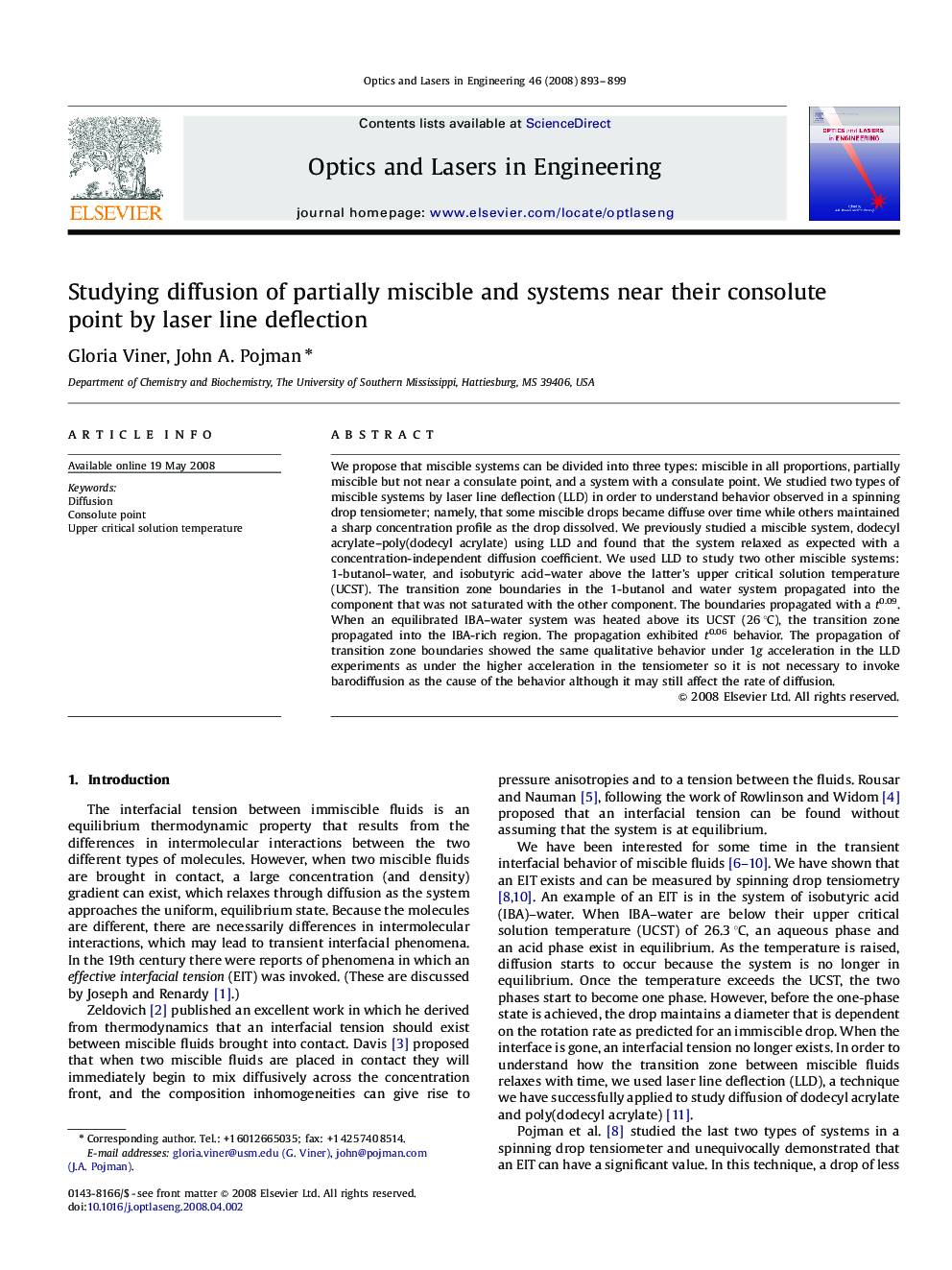| Article ID | Journal | Published Year | Pages | File Type |
|---|---|---|---|---|
| 746407 | Optics and Lasers in Engineering | 2008 | 7 Pages |
We propose that miscible systems can be divided into three types: miscible in all proportions, partially miscible but not near a consulate point, and a system with a consulate point. We studied two types of miscible systems by laser line deflection (LLD) in order to understand behavior observed in a spinning drop tensiometer; namely, that some miscible drops became diffuse over time while others maintained a sharp concentration profile as the drop dissolved. We previously studied a miscible system, dodecyl acrylate–poly(dodecyl acrylate) using LLD and found that the system relaxed as expected with a concentration-independent diffusion coefficient. We used LLD to study two other miscible systems: 1-butanol–water, and isobutyric acid–water above the latter's upper critical solution temperature (UCST). The transition zone boundaries in the 1-butanol and water system propagated into the component that was not saturated with the other component. The boundaries propagated with a t0.09. When an equilibrated IBA–water system was heated above its UCST (26 °C), the transition zone propagated into the IBA-rich region. The propagation exhibited t0.06 behavior. The propagation of transition zone boundaries showed the same qualitative behavior under 1g acceleration in the LLD experiments as under the higher acceleration in the tensiometer so it is not necessary to invoke barodiffusion as the cause of the behavior although it may still affect the rate of diffusion.
